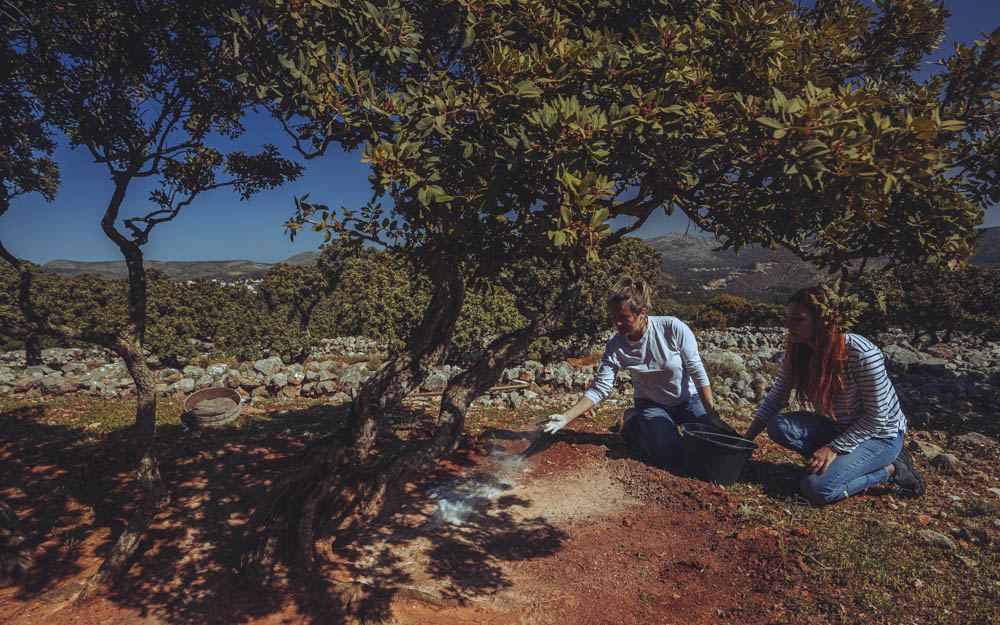Roula Boura grabbed a wicker broom and is sweeping the dirt away from…the dirt. It sounds completely absurd, but it is not. The surface that she is cleaning is right below the branches of a mastic tree and this is a necessary process she must carry out first, before the collection of mastic. “First we sweep the ground using an amia, a special tool that looks like a rake, to remove the stones and weeds that have accumulated throughout the winter, we continue with the broom to remove the leafs etcetera, and then, we sprinkle the soil with white limestone powder, that is to say simple chalk, which is an inert substance and does not affect the composition of mastic.
This is the preparation stage, which starts in mid-June and is essential so that the ground is as clean as possible for the mastic tears to drop on it”, she says. Tears are the drops of mastic that drip in a sticky, liquid form, from the trunk and branches of the tree.
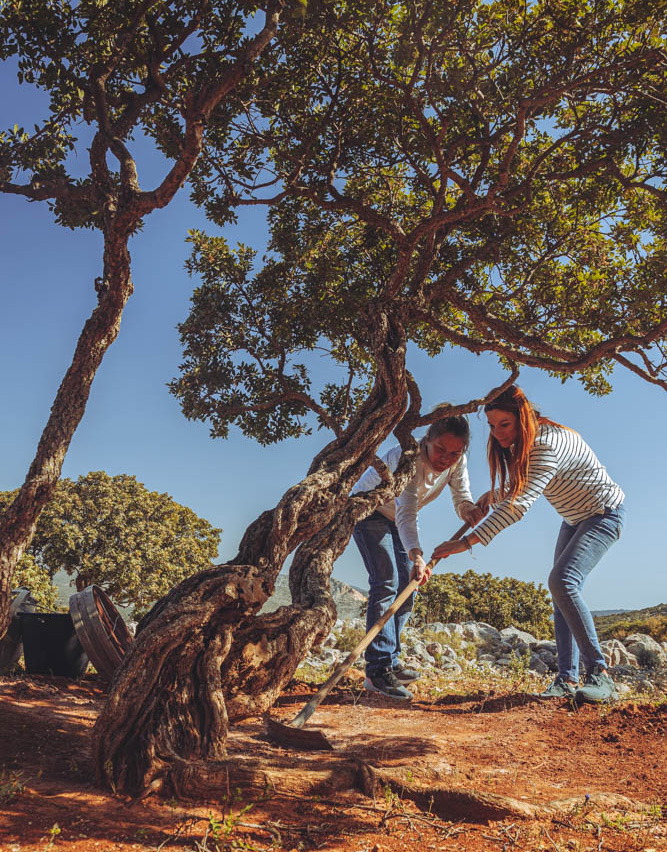
© Nikos Boutsikos, Nidibou Photography
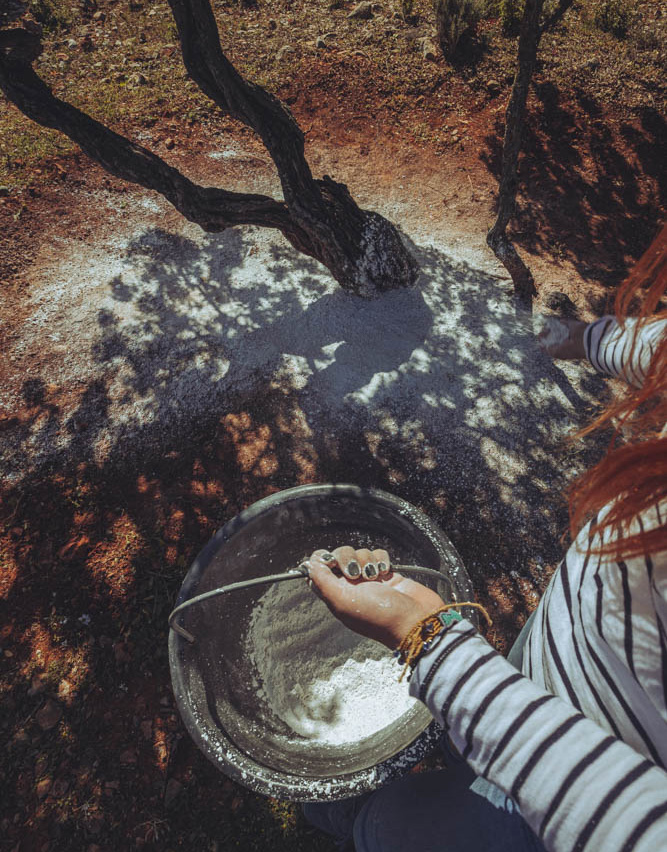
© Nikos Boutsikos, Nidibou Photography
Chios mastic is a natural, aromatic resin, with antimicrobial, anti-inflammatory and antioxidant properties that has been assigned a monograph from the European Medicines Agency since 2015. The famous mastic trees, which cover most of South Chios, grow only here and nowhere else in the world thanks to the microclimate and eugenics. But the most important thing is that these precious tears of the mastic bush have been defining the life of Chios inhabitants for centuries. They made Chios famous all over the world, ever since antiquity and in fact, in the Byzantine times, mastic was considered to be a luxury export product.
It is said that the aristocracy of ancient Rome used toothpicks from the Chian mastic trees, while ancient writers, philosophers and doctors were referring to its medicinal properties. It has been used for a long time in the preparation of ointments and creams, herbal concoctions, deodorants and of course in cooking and confectionery ̶ the first Turkish delight was made with mastic in the mid-18th century.
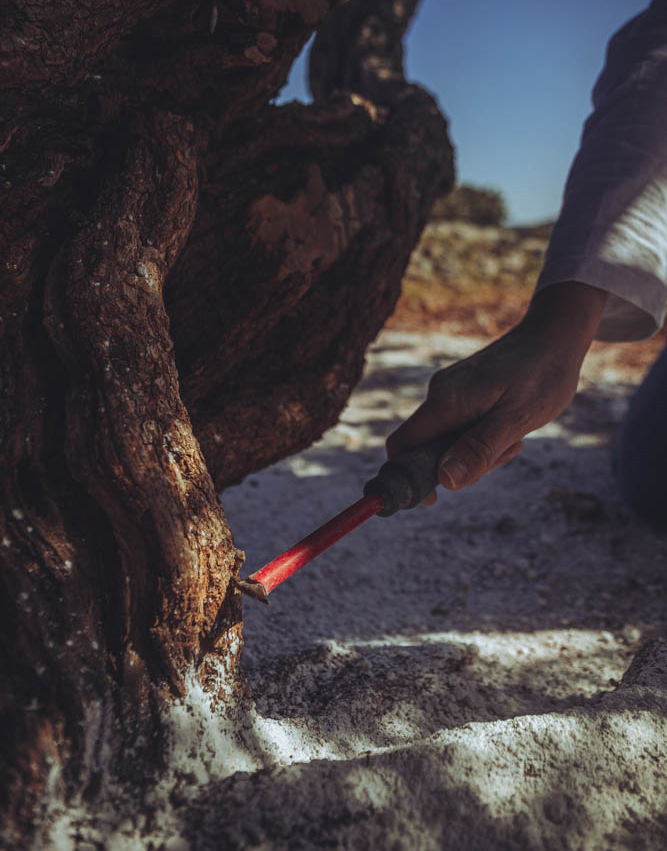
© Nikos Boutsikos, Nidibou Photography
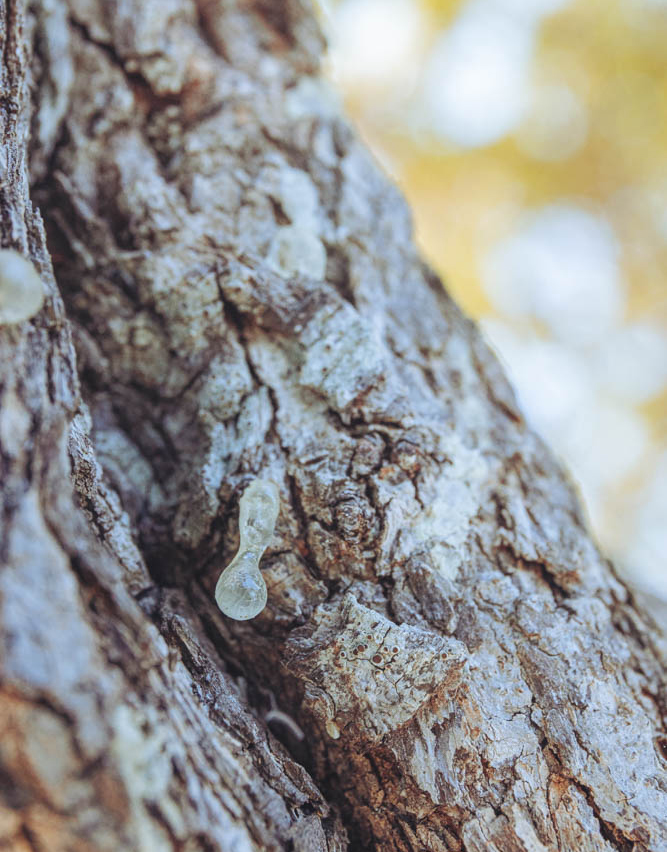
© Nikos Boutsikos, Nidibou Photography
The great prosperity of course came with the Genoese who occupied Chios in 1346, founded the company Maona and exploited mastic for two centuries. In order to protect the cultivation and the mastic growers, that is, their interests, they fortified South Chios with castle-villages in the lowlands, fortresses on the hills and observation towers on the shores.
The famous mastic villages, 26 in number, with the most famous being Mesta and Pyrgi, are invisible from the sea and walled off by the outer walls of their houses. There are labyrinthine alleys, houses which form a solid array around an eminent tower, and neighborhoods reminiscent of buffer zones. Thus, the Genoese managed to keep the pirates away, while it is said that in the case of smuggling, a variety of penalties were imposed ranging from fines to death by hanging. In the Ottoman period, the inhabitants of South Chios had special privileges, paying of course their taxes in mastic.
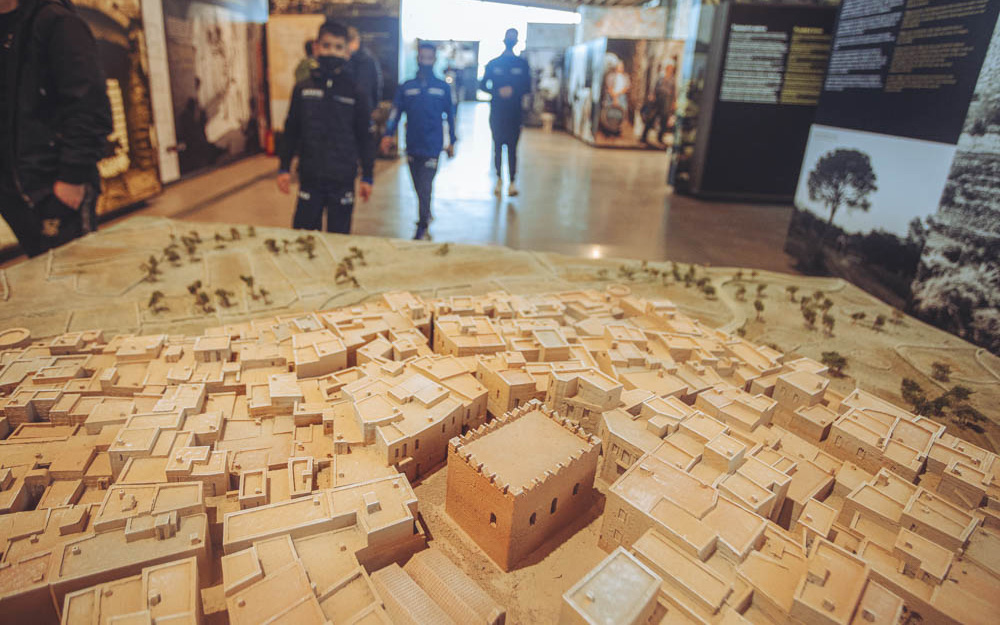
© Nikos Boutsikos, Nidibou Photography
You will discover this interesting history at the Chios Mastic Museum, which operates under the direction of the Piraeus Bank Group Cultural Foundation, in Pyrgi. Going through its excellent exhibition, apart from the history and the emotional dependence of the locals on mastic which led to the inclusion of the know-how of cultivating mastic in UNESCO’s Representative List of the Intangible Cultural Heritage of Humanity, in 2015 ̶ you are also going to discover the interesting history of Chios Mastiha Growers Association. This is, in fact, one of the few associations that continue to operate as a Mandatory Cooperative, with the same articles of association since 1938, which still satisfy both itself and the mastic growers.
As the local coordinator, Eleni Paidousi, explained to us, after the war and through an impressive business plan, by the standards of that time, the Association managed to expand in the market and increase the product’s sales and price, while from 1950 it started processing mastic, initially producing mastic oil and then the well-known ELMA chewing gums (all three have been PDO products since 1997) to reach the establishment of the subsidiary Mediterra S.A., which to date produces retail mastic products, under the brand name Mastihashop.
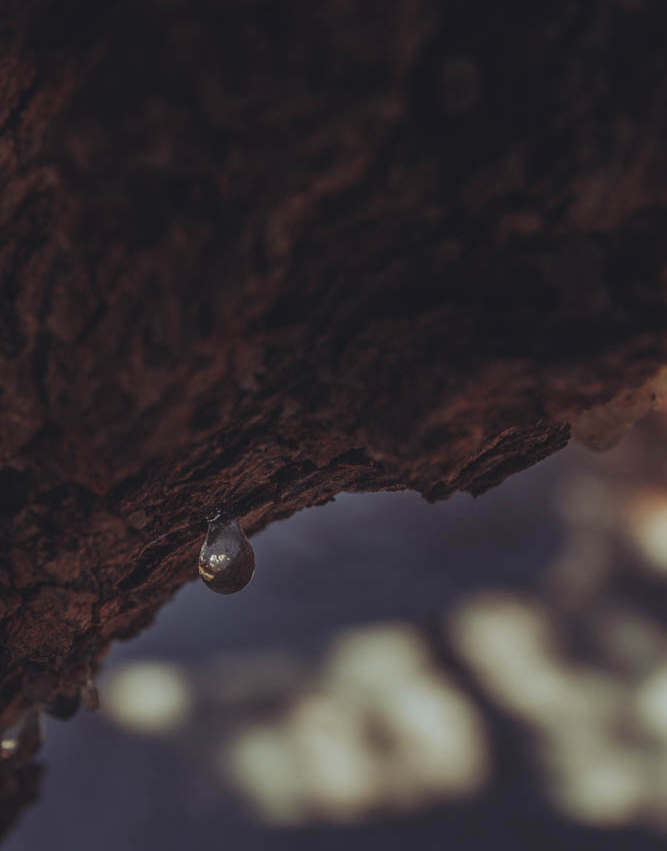
© Nikos Boutsikos, Nidibou Photography
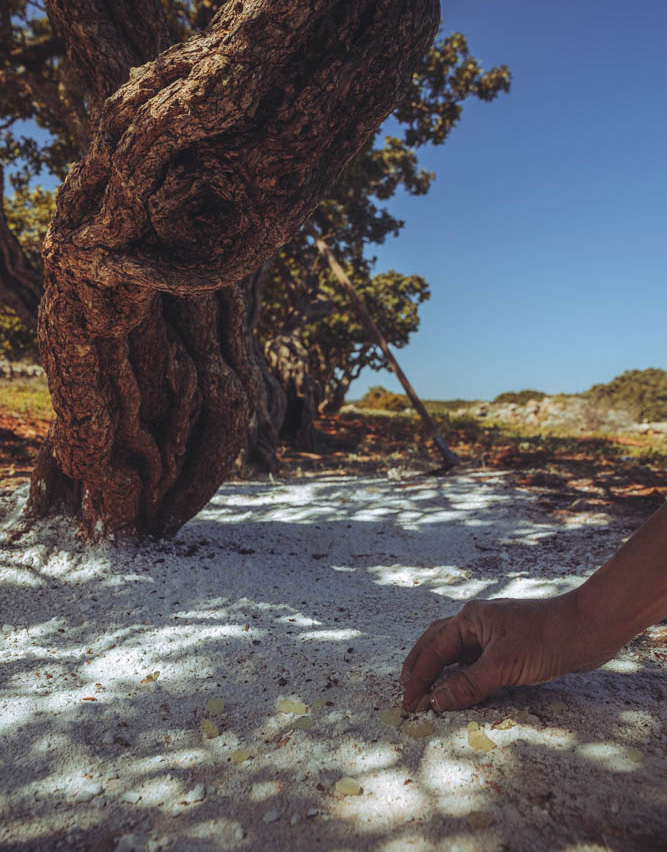
© Nikos Boutsikos, Nidibou Photography
In the field…
“After cleaning the area, the famous embroidery begins: superficial scratches are made on the trunk so that its resinous sap comes out. The tools used are especially created for this process. The first embroideries are made on the lower part of the trunk, to discreetly wake the tree up without shocking it. On the first day we make a few embroideries and return to the same tree every five or six days to continue the embroidery upwards. This process continues until the end of September”, says Roula Boura, owner of the ecotourism travel agency Masticulture, which organizes wonderful experiential activities in the mastic groves for the visitors of Chios.
Together, we embroidered a mastic tree and went through all the subsequent stages of the process, to find out how difficult it is. That is why the Association is offering strong incentives to new producers. The next stage, however, takes place in the fall, when the mastic growers scrape the trunks with a scraper, to remove the tears that are stuck on the trunk. Both these and the ones that have dripped on the ground have already dried out and solidified. With a simple broom and a dustpan they collect them from the white soil, sift them out from soil and put them into sacks.
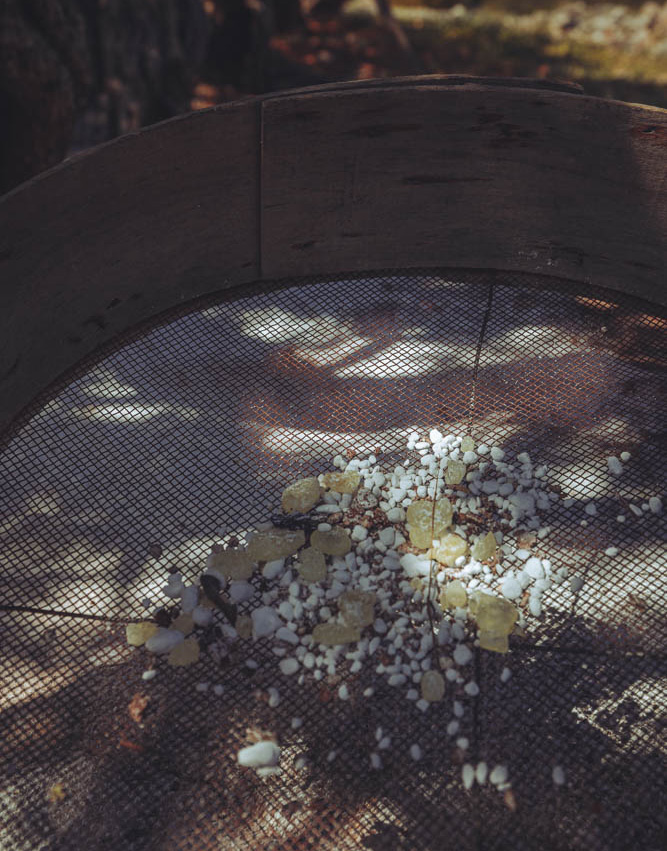
© Nikos Boutsikos, Nidibou Photography
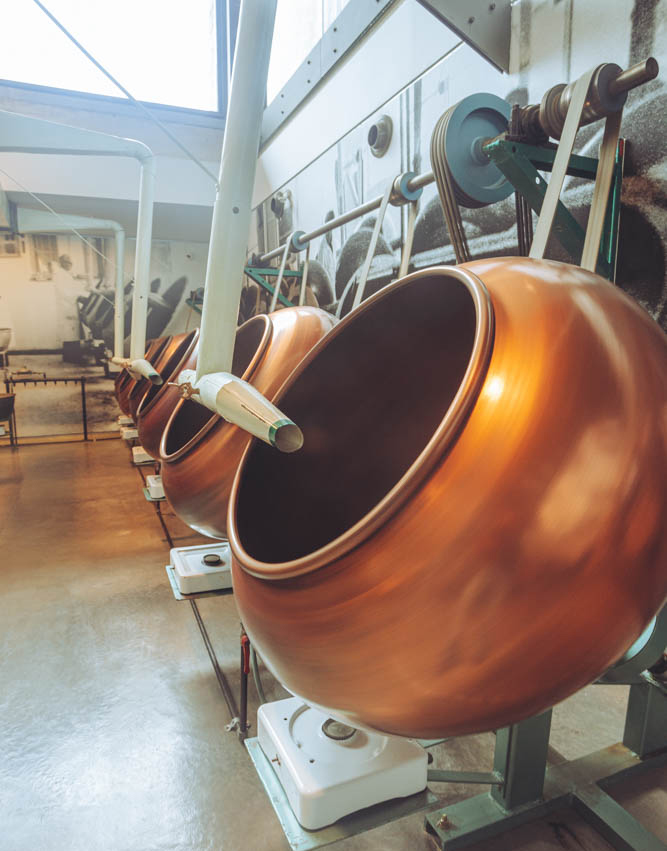
© Nikos Boutsikos, Nidibou Photography
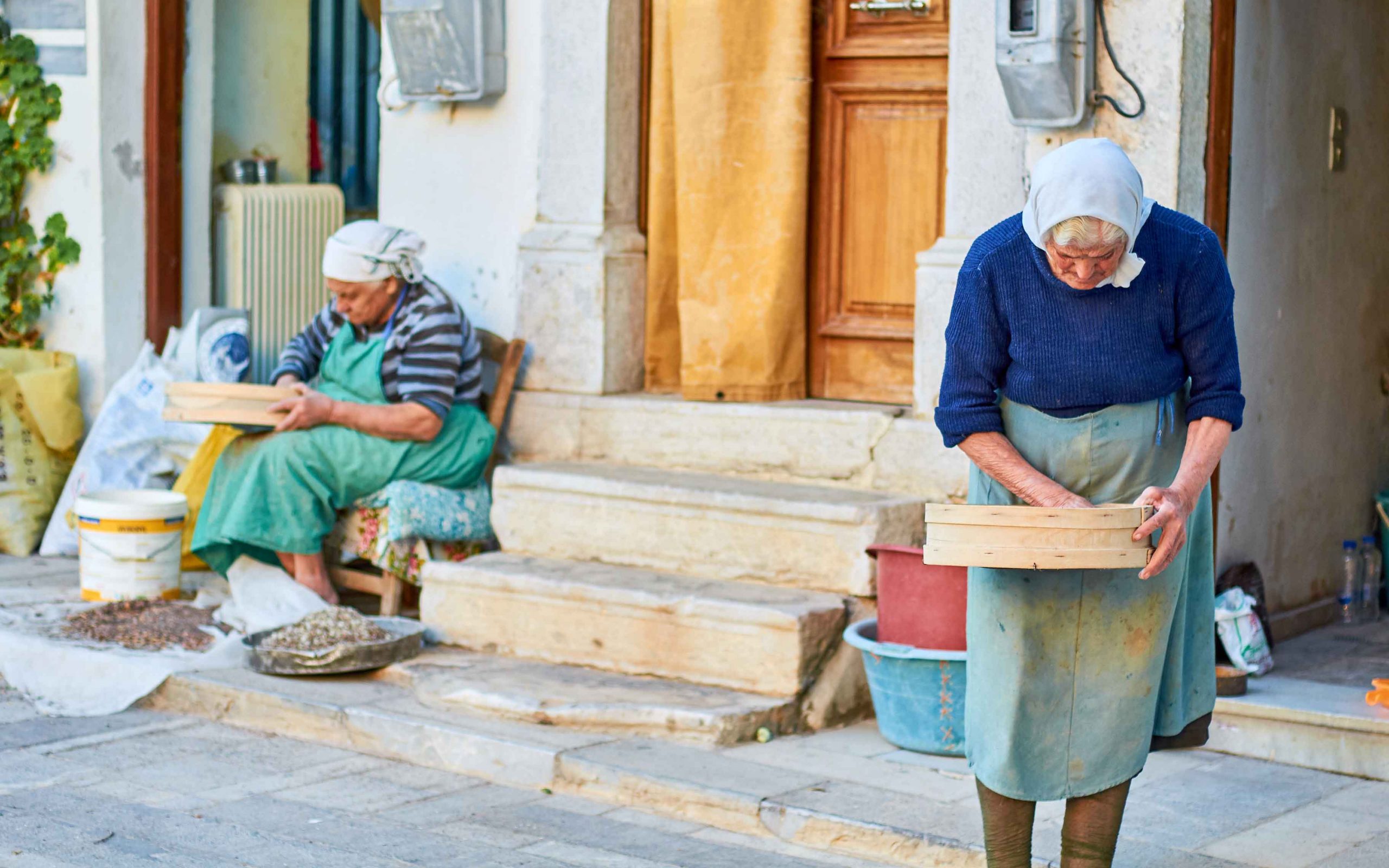
© Shutterstock
Mastic will then need to pass through three sieves to get clean from dirt and then be immersed into a barrel of water ̶ others rinse it with seawater. As soon as mastic tears get clean, they surface immediately and then they are collected and left to dry. Then, water is stirred and the rest of the mastic pieces are rubbed by hand: the cleanest pieces rise to the surface and are kept separately from the first ones.
In the third phase of this process, they add salt to clean the remaining mastic pieces, which are also kept separately. The producers profit depends on the quantity but also on the purity of mastic, therefore “The process is concluded with a small knife.
Mastic is cleaned by hand, grain by grain, to remove every spot, in order for the product to receive a grade A”, says Roula and starts cleaning mastic. This is the image you see in autumn in the mastic villages: women sitting in the alleys, wiping the mastic tears by hand, one by one, chatting and joking with each other ̶ a sort of psychotherapy that strengthens the community bonds, at the same time.

